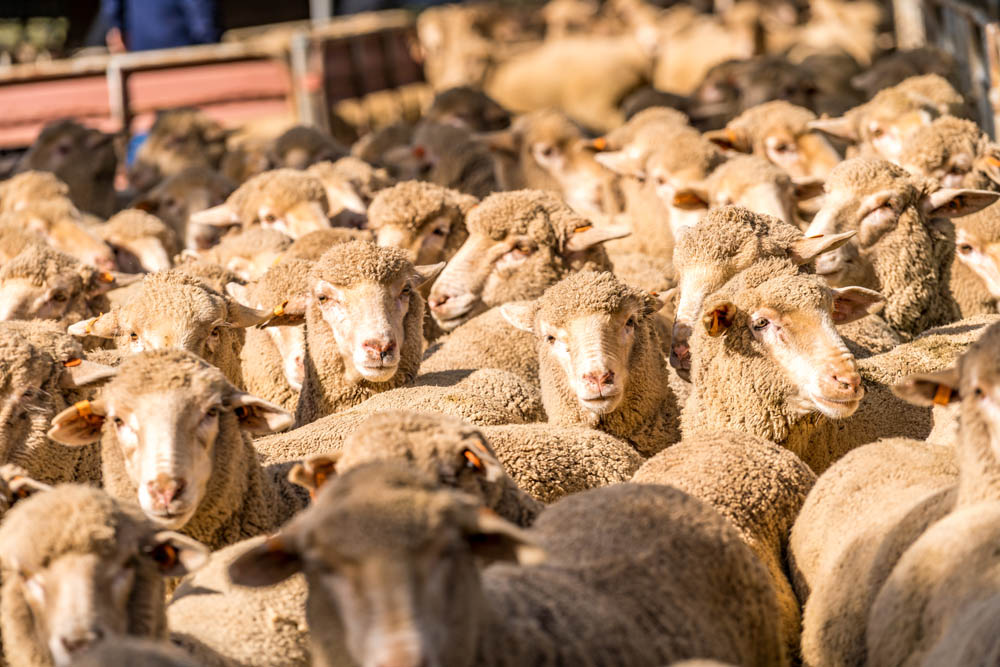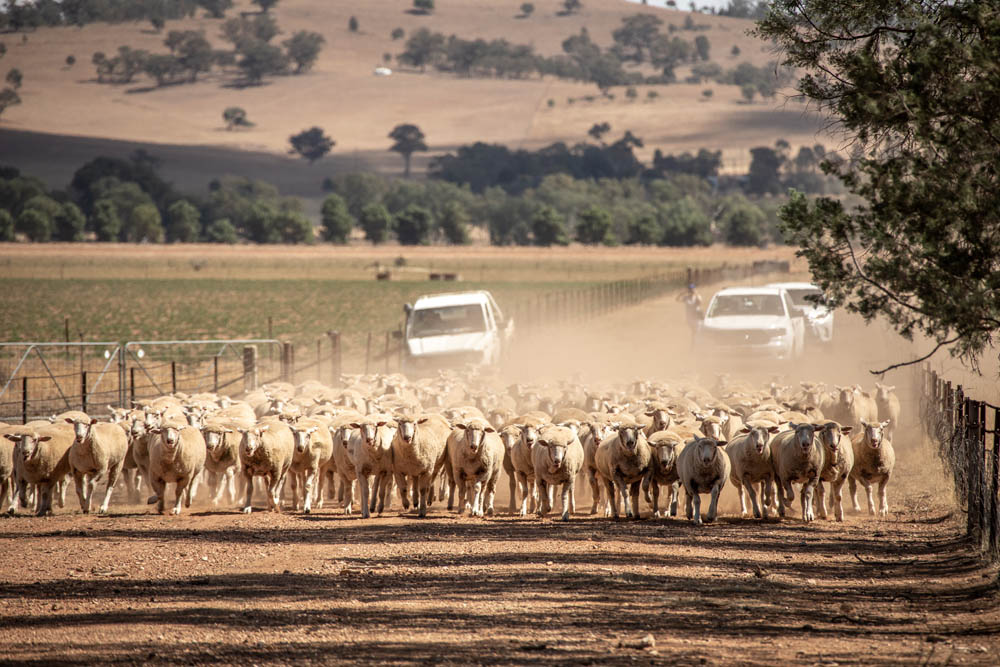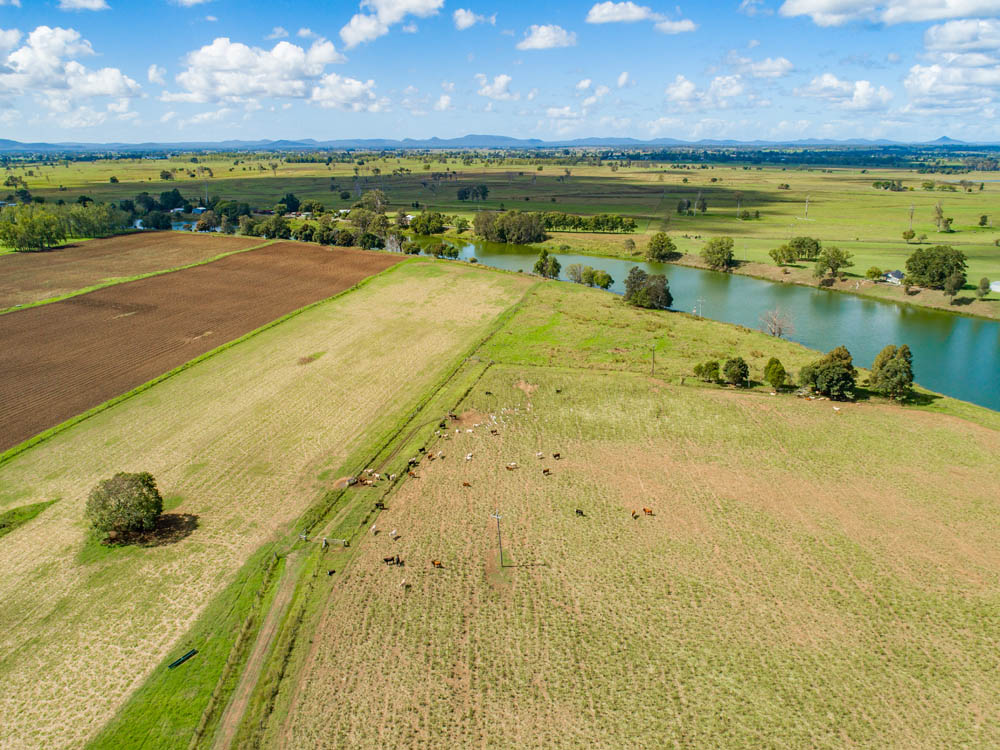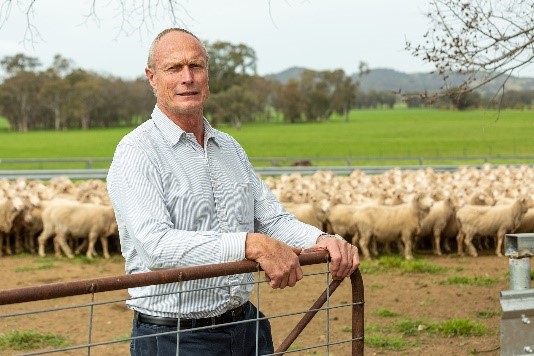- Output $1,213 million est. Down 11% yoy.
- The Restocker Saleyard Indicator was again the standout, up 22% on the 5-year average.
- Tight supply and strong restocker demand offset the global market challenges.
Production
In-line with flock rebuilding intentions and the rain-driven urgency to utilise available feed, adult sheep slaughter was down 51% year-on-year to 1.2 million head 151 as farmers sought to retain older ewes and purchase replacement breeders. The sheer appetite for replacement stock in the Eastern States was so pronounced, that by the end of 2020 it was estimated that two million breeding ewes had been trucked across the Nullarbor to farms in NSW, Queensland and Victoria, due to less favourable seasonal conditions in the West. 109 Average sheep cwt w were underpinned by the improved seasonal conditions and abundant feed availability, up 2% year-on-year. 151 The decrease in adult sheep slaughter saw mutton production fall 50% year-on-year, down 32% on the 10-year average.
The turnaround in seasonal conditions experienced in early 2020 led to increased marking rates and thus an increase in the number of available lambs into 2021. Lamb slaughter numbers were up 7% year-on-year to just over 5 million head. 151 Lamb cwt w remained steady year-on-year, and, combined with the fall in slaughter, drove a 7% increase in lamb production. 151
Price
Prices strengthened again in late 2020 and into early 2021 due to continued demand from restockers for lambs and ewes, as well as the global economic recovery which drove export demand. Mutton prices continued to trade at the top of the range for much of the year, averaging 640 cents per kilogram cwt w , 24% above the five-year average. The indicator initially fell 26% off the high of 742 cents achieved in early June 2020, to a seasonal low of 544 cents in August 2020 but recovered, well-above the 600 cents mark by October 2020, and generally traded between the 600-700 cents range for the rest of the year. 155 Almost all mutton is exported and thus the market is heavily influenced by the global market, however the reduced supply of adult sheep and large-scale restocking efforts, amplified competition between producers and processors, and largely supported domestic demand.
Trade
Contribution to total export value 2020-21
- Bone-in frozen cuts of mutton
- Boneless frozen mutton
- Frozen carcasses
- Bone-in fresh or chilled cuts of mutton
- Fresh or chilled carcases
- Boneless fresh or chilled mutton
Contribution to total export value 2020-21
- Bone-in frozen cuts of lamb
- Boneless frozen lamb
- Frozen carcasses
- Boneless fresh or chilled lamb
- Bone-in fresh or chilled cuts of lamb
- Fresh or chilled carcases
The high domestic livestock prices and resilient demand from international markets continued to support trade values. 158 China remained the largest and most valuable export market for NSW sheepmeat, increasing its market share by volume to 59%. 128 The United States was the second largest market. South Korea was the standout growth market despite being small in terms of total market share (7% by value and 5% by volume in 2020-21). Boosted by the Korea-Australia Free Trade Agreement (KAFTA), which entered into force in December 2014, export volumes to South Korea grew (albeit from a low base) by 38% and 49% by value year-on-year. 128
NSW mutton exports trailed the pace set in 2019-20 due to the limited exportable surplus. Total annual mutton export volumes fell 16% year-on-year to 50 million tonnes, just below the 5-year average of 51 million tonnes. 128 Export demand for mutton continued to be relatively strong from China as a result of reduced pork supplies from a second wave of African Swine Fever, and lower global economic growth which pushed consumers towards cheaper cuts of meat. 34
NSW lamb exports for 2020-21 reached 73 thousand tonnes, up 16% year-on-year. The value of lamb exports increased 6% to $683 million. 128 The Australian export price for lamb in 2020-21 was 28% above the five-year average. 158 Lamb contributed to a much larger proportion of total sheepmeat exports in 2020-21, reflecting the constrained mutton supply.
Macroeconomic Conditions
The impact of the ongoing COVID-19 outbreak on global prices was largely countered by the breaking of the drought. The sustained high prices for adult sheep and lambs did bring into question the competitiveness of Australian sheepmeat on a global scale. The global FAO Export Ovine Price Index indicates that sheepmeat rose significantly over the past 5-years 104 mainly due to global demand outstripping global supply. Despite this, Australian sheep and lamb is still relatively cheap in Australian Dollar terms when compared to other global prices. The one exception is New Zealand where a clear disconnect emerged in 2020 due to the increase in Australian prices due to restocker demand. This could translate to a loss of market share if this situation persists into the long-term. 149

Outlook

The mid-term industry market outlook looks favourable. Prices have begun to ease slightly and will continue to decline as supply reaches its usual spring/early summer seasonal peak however, saleyard prices continue to be at near or record levels and are expected to remain elevated well into 2022, supported by continuing domestic demand from restockers and feeders, and strengthening export demand”.




